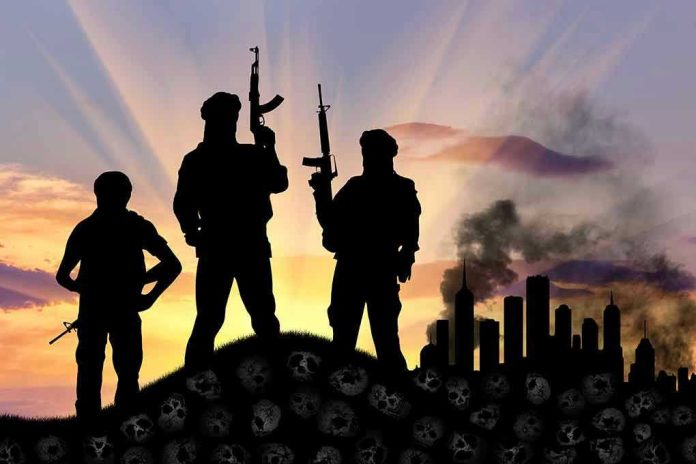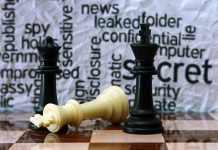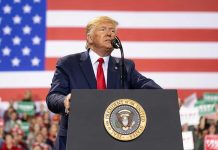
What happens when a New York mayoral frontrunner publicly embraces a Brooklyn imam whose past “army of 10,000 men” jihad call still echoes through the city’s political back alleys?
Story Snapshot
- Mayoral candidate Zohran Mamdani’s photo-op with Imam Siraj Wahhaj reignites old fears about extremism and political judgment.
- Wahhaj, unindicted co-conspirator in the 1993 WTC bombing, once urged a “gun-free jihad” and mass Muslim march in New York.
- Opponents and media pounce, framing the alliance as a security threat and a litmus test for mainstream politics.
- The uproar highlights the perils—and calculations—of building urban coalitions in an age of polarized identity politics.
When Political Ambition Collides with a Controversial Legacy
Few campaign photos have lit as many fuses as the one showing Zohran Mamdani, Democratic favorite for New York City mayor, shoulder-to-shoulder with Brooklyn’s Imam Siraj Wahhaj outside Masjid At-Taqwa. To outsiders, it might look like a routine nod to community engagement. But for New Yorkers with long memories, Wahhaj’s presence in the picture calls up a jarring history. Once named as an unindicted co-conspirator in the 1993 World Trade Center bombing, Wahhaj is infamous for urging a “gun-free jihad” and assembling an “army” of 10,000 Muslim men to march through the city—a moment that still haunts security briefings and political strategy sessions alike.
🇺🇸MAMDANI POSES WITH IMAM WHO ONCE CALLED FOR “JIHAD” IN NEW YORK
NYC mayoral frontrunner Zohran Mamdani is under fire after proudly posting a photo with Imam Siraj Wahhaj – a controversial cleric who once urged “jihad” in New York City.
In a sermon from the early 2000s, Wahhaj… https://t.co/mdxMG7FxIb pic.twitter.com/2JK62TRve7
— Mario Nawfal (@MarioNawfal) October 19, 2025
The timing of the photo-op—just days after a heated mayoral debate—fanned the flames. Republican nominee Curtis Sliwa and independent candidate Andrew Cuomo wasted no time condemning Mamdani’s alliance, portraying it as an outright threat to public safety and a slap in the face to the city’s diverse, and often divided, communities. For Mamdani, whose campaign leans on both progressive and minority support, the backlash is more than a crisis; it’s a test of the fragile coalitions that hold New York politics together, especially as issues of extremism, antisemitism, and LGBTQ rights dominate the front pages.
From Pulpit to Political Battleground: Wahhaj’s Enduring Shadow
Siraj Wahhaj’s journey from Jeffrey Kearse, a convert and local imam, to the center of this political storm is a case study in the double-edged nature of community leadership. Wahhaj has spent decades building Masjid At-Taqwa into a Brooklyn institution, mentoring activists like Linda Sarsour and spearheading social initiatives. Yet his legacy is inseparable from a handful of incendiary moments—none more notorious than his early 2000s sermon calling for a nonviolent “jihad” in the heart of New York, and his defense of individuals later convicted of terrorism. While Wahhaj was never charged with a crime, his name in the WTC bombing files and his rhetoric about assembling “an army” have made him a lightning rod for critics and a symbol of resilience to supporters.
In today’s hyper-vigilant political climate, any association with Wahhaj triggers a predictable script: opponents evoke images of chaos, media outlets revisit his past, and supporters insist his words were mischaracterized or rooted in misunderstood religious doctrine. For Mamdani, the cost of such an alliance may be measured in lost endorsements, waning enthusiasm among moderates, and a deluge of negative press—outcomes with real consequences as the mayoral race tightens and every misstep is magnified.
Political Fallout and the Risks of Coalition-Building
Building a winning coalition in New York means walking a tightrope over a minefield of identity, history, and public perception. Mamdani’s rise—fueled by left-wing activism and pro-Palestinian positions—made him a darling of certain progressive circles but exposed him to fierce scrutiny over his alliances. The Wahhaj photo-op didn’t just revive old controversies; it opened new fronts in the city’s ongoing war over who gets to set the terms of political inclusion. Curtis Sliwa’s warning that “New York needs a mayor who protects New Yorkers from terrorism, not embraces terrorists,” and Andrew Cuomo’s broadside about “radical hate toward the LGBTQ community” both landed with force, crystallizing the stakes for voters who prize safety and mainstream legitimacy over activist credentials.
The uproar also laid bare the deep divides within the city’s Muslim community, where Wahhaj’s decades of service and reputation for advocacy are weighed against the shadow of his rhetoric and associations. For LGBTQ and Jewish groups, the controversy resurrected anxieties about rising antisemitism and intolerance—issues that have roiled city politics and shaped the 2025 campaign’s tone from the outset.
Long-Term Implications: Lessons for Urban Politics and Public Accountability
The immediate fallout from the Mamdani-Wahhaj alliance is already reshaping the 2025 mayoral landscape. But the deeper lesson is about the risks and rewards of coalition politics in an era where every handshake, sermon, and social media post is fodder for instant outrage or mobilization. The Mamdani campaign’s silence in the face of criticism has only sharpened questions about accountability and the standards to which public officials must be held. National voices, including Vice President JD Vance, have joined the chorus demanding clear lines be drawn between legitimate community engagement and the mainstreaming of controversial figures.
Security and counterterrorism experts—often invoked but rarely heeded until politics collides with the headlines—have long warned about the dangers of blurring those lines. Political scientists and scholars of American Islam point out that Wahhaj’s story is not unique: the tension between grassroots influence and controversial pasts is a recurring feature of urban politics. But as the Mamdani episode demonstrates, the cost of miscalculation is rising, and the appetite for nuance is shrinking. For candidates, activists, and voters alike, the message is clear: in a city where everything is political, every alliance is a gamble, and every photo can become a flashpoint.













